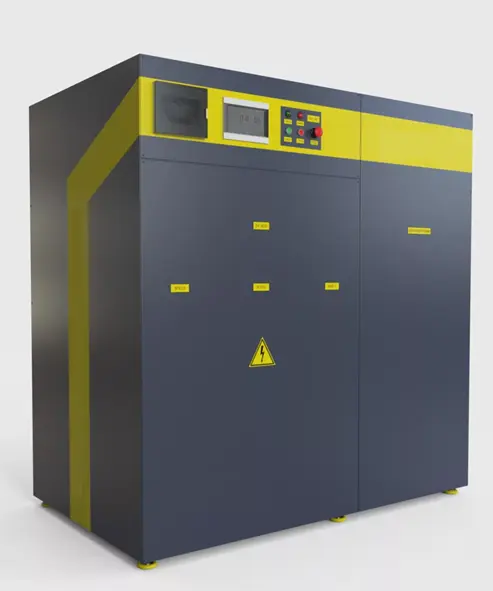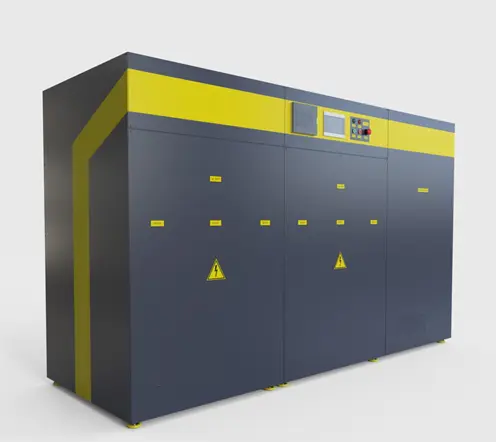Technical Notes
Required Pressure and/or Temperature vs. Steam Output
Temperature (° C) | Pressure (bar) | Steam Output (% of nominal value) |
| 100 | 1.0 | 100 |
| 105 | 1.2 | 99.5 |
| 110 | 1.4 | 99.2 |
| 115 | 1.7 | 98.9 |
| 120 | 2.0 | 98.6 |
| 125 | 2.3 | 98.2 |
| 130 | 2.7 | 97.8 |
| 135 | 3.2 | 97.4 |
| 140 | 3.6 | 97 |
| 145 | 4.1 | 96.6 |
| 150 | 4.9 | 96.1 |
| 155 | 5.5 | 95.7 |
| 160 | 6.0 | 95.2 |
| 165 | 7.0 | 94.7 |
| 170 | 8.0 | 94.1 |
| 175 | 9.0 | 93.5 |
| 180 | 10.0 | 93 |
Notes:
- For a given steam generator, the steam output will be lower if your application requires a higher temperature and/or higher pressure. This is simply due to the fact that more energy is required to produce 1 kg of steam if the temperature and pressure of that 1 kg is higher.
- For example, an SG-1000 (1000 kg/h model) will produce 930 kg/h of steam if its output is configured to 10 bars and 180°C (higher pressure and temperature go hand-in-hand: you cannot have one without the other)
-
For accurate calculations, it is necessary to use thermodynamic tables of water and steam (e.g., IAPWS-97).
If you require even higher steam pressure, more steam, ...
The answer is most probably yes.
- Pressures of up to 20 bar are possible
- Integrations with other energy saving equipment such as heat exchangers, heat pumps, etc. are possible
- Larger generators are possible (SG-5000, ...)
- Intermediate size generators are possible (e.g. 600 kg/h, 750 kg/h, etc.)
Please contact us for details, e.g. by filling out this form.
Water Quality
Our generators are designed to be more resistant and resilient than typical steam boilers with respect to water quality. However, this does not mean they should be operated with untreated water, e.g. from a well.
Ordinary tap water will be sufficient in most cases, but please do consult with us so we can take steps that will ensure a long service life of up to 20 years.
Savings Potential
While the potential savings in terms of saved energy (kWh) are quite obvious, calculating the money saved depends on multiple factors. Here is a quick overview of points to consider:
- Local cost of electricity (kWh)
- Local cost of alternative energy form (gas, diesel, other)
- Costs of delivery of energy (e.g. delivery of diesel)
- Costs associated with storage of energy
- Diesel tanks, gas tanks
- Fire and explosion risk
- Costs (including goodwill) associated with pollution
- Costs associated with obtaining access to sufficient external electric power (transformers, larger power cables, etc.)
- Possible subventions and payments for achieving anti-pollution and sustainability goals
- Autoproduction of energy (producing a substantial part of required energy, e.g. with solar panels)





